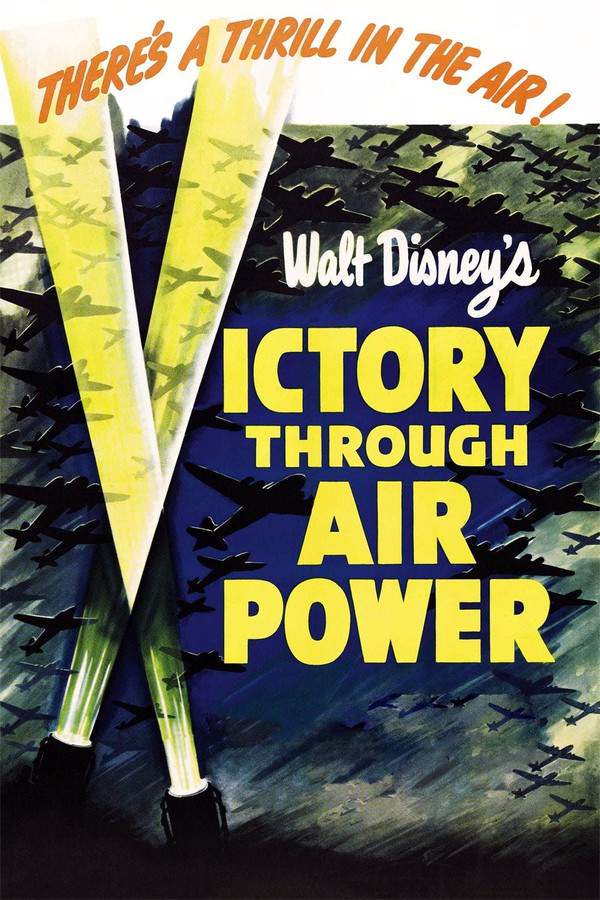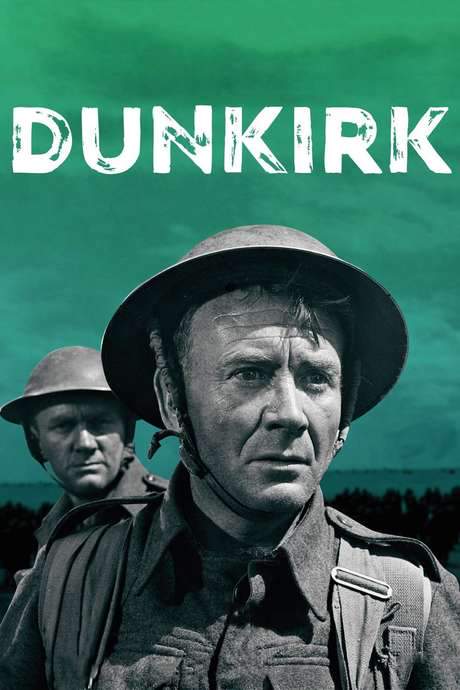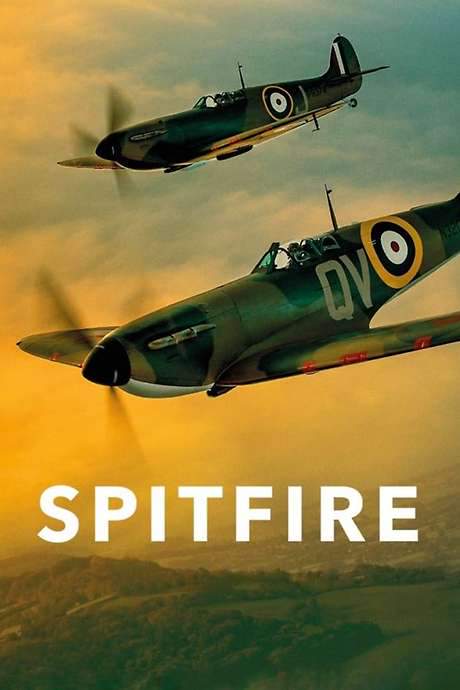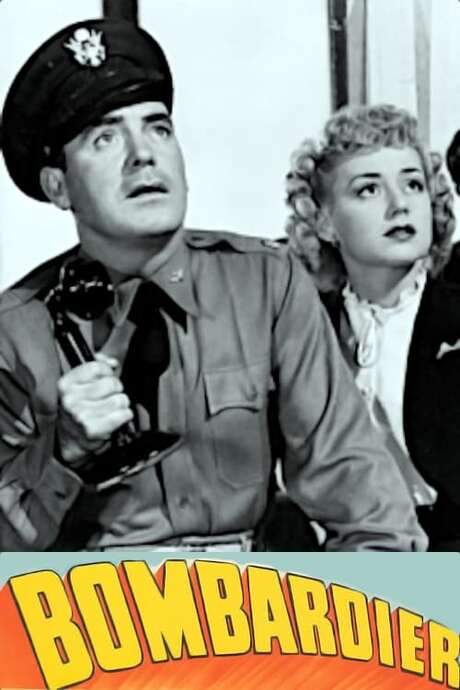
Victory Through Air Power
Year: 1943
Runtime: 70 min
Language: English
Directors: Jack Kinney, Clyde Geronimi, H.C. Potter, James Algar
This documentary explores the development of aerial warfare, using captivating animation to illustrate the crucial role of long-range strategic bombing in historical conflicts. It examines how air superiority significantly influenced the course of battles and shaped the outcome of wars, providing a fresh perspective on this powerful aspect of military history.
Warning: spoilers below!
Haven’t seen Victory Through Air Power yet? This summary contains major spoilers. Bookmark the page, watch the movie, and come back for the full breakdown. If you're ready, scroll on and relive the story!
Timeline – Victory Through Air Power (1943)
Trace every key event in Victory Through Air Power (1943) with our detailed, chronological timeline. Perfect for unpacking nonlinear stories, spotting hidden connections, and understanding how each scene builds toward the film’s climax. Whether you're revisiting or decoding for the first time, this timeline gives you the full picture.
Last Updated: November 16, 2024 at 14:02
Explore Movie Threads
Discover curated groups of movies connected by mood, themes, and story style. Browse collections built around emotion, atmosphere, and narrative focus to easily find films that match what you feel like watching right now.
Urgent Persuasive Documentaries like Victory Through Air Power
Non-fiction films that argue a compelling point with high-stakes urgency.Movies like Victory Through Air Power that function as compelling arguments rather than neutral documentaries. These similar films blend history and advocacy, creating a tense and focused viewing experience centered on convincing the audience of a critical point.
Narrative Summary
These films typically begin by establishing a significant problem or threat, then systematically present historical evidence, expert testimony, and logical reasoning to build an unassailable case for a specific course of action. The narrative is driven by the force of the argument itself, building momentum towards a clear, often hopeful, conclusion.
Why These Movies?
Movies are grouped here based on their shared persuasive drive, urgent tone, and focus on presenting a strategic argument. The experience is defined by a sense of high stakes and intellectual engagement, where the primary goal is to convince the viewer.
Strategic Military Analysis Films like Victory Through Air Power
Stories that dissect the big-picture plans and doctrines of warfare.If you liked the strategic focus of Victory Through Air Power, explore these movies that similarly analyze military doctrine and technological innovation. These war stories prioritize the big picture of planning and logistics over frontline combat.
Narrative Summary
Narratives in this thread often follow the development and implementation of a new strategy or technology, examining its successes and failures through historical case studies or fictional scenarios. The conflict is intellectual and logistical, pitting different doctrines against each other to demonstrate their effectiveness.
Why These Movies?
These movies are united by their analytical approach to war, prioritizing strategic overviews, doctrinal debates, and the impact of technology. They share a sobering, focused mood and appeal to viewers interested in the mechanics of conflict rather than just its visceral drama.
Unlock the Full Story of Victory Through Air Power
Don't stop at just watching — explore Victory Through Air Power in full detail. From the complete plot summary and scene-by-scene timeline to character breakdowns, thematic analysis, and a deep dive into the ending — every page helps you truly understand what Victory Through Air Power is all about. Plus, discover what's next after the movie.
Victory Through Air Power Summary
Read a complete plot summary of Victory Through Air Power, including all key story points, character arcs, and turning points. This in-depth recap is ideal for understanding the narrative structure or reviewing what happened in the movie.

Characters, Settings & Themes in Victory Through Air Power
Discover the characters, locations, and core themes that shape Victory Through Air Power. Get insights into symbolic elements, setting significance, and deeper narrative meaning — ideal for thematic analysis and movie breakdowns.

Victory Through Air Power Spoiler-Free Summary
Get a quick, spoiler-free overview of Victory Through Air Power that covers the main plot points and key details without revealing any major twists or spoilers. Perfect for those who want to know what to expect before diving in.

More About Victory Through Air Power
Visit What's After the Movie to explore more about Victory Through Air Power: box office results, cast and crew info, production details, post-credit scenes, and external links — all in one place for movie fans and researchers.

Similar Movies to Victory Through Air Power
Discover movies like Victory Through Air Power that share similar genres, themes, and storytelling elements. Whether you’re drawn to the atmosphere, character arcs, or plot structure, these curated recommendations will help you explore more films you’ll love.
Explore More About Movie Victory Through Air Power
Victory Through Air Power (1943) Plot Summary & Movie Recap
Victory Through Air Power (1943) Scene-by-Scene Movie Timeline
Victory Through Air Power (1943) Spoiler-Free Summary & Key Flow
Movies Like Victory Through Air Power – Similar Titles You’ll Enjoy
Spitfire (2018) Plot Summary & Ending Explained
Battle of Midway: The True Story (2019) Complete Plot Breakdown
Heroes of the Sky: The Mighty Eighth Air Force (2020) Full Summary & Key Details
WWII in Color: Road to Victory (1000) Story Summary & Characters
Heroes of the Sky: The Mighty Eighth Air Force (2020) Ending Explained & Film Insights
The Conquest of the Air (1931) Story Summary & Characters
Victory at Sea (1954) Spoiler-Packed Plot Recap
The Price of Victory (1942) Ending Explained & Film Insights
The Road to Victory (1944) Ending Explained & Film Insights
Victory in the West (1941) Detailed Story Recap
Strange Victory (1948) Full Summary & Key Details
The Lion Has Wings (1939) Complete Plot Breakdown
Victory Vehicles (1943) Ending Explained & Film Insights
Bombardier (1943) Movie Recap & Themes
Victory Quiz (1942) Detailed Story Recap











































